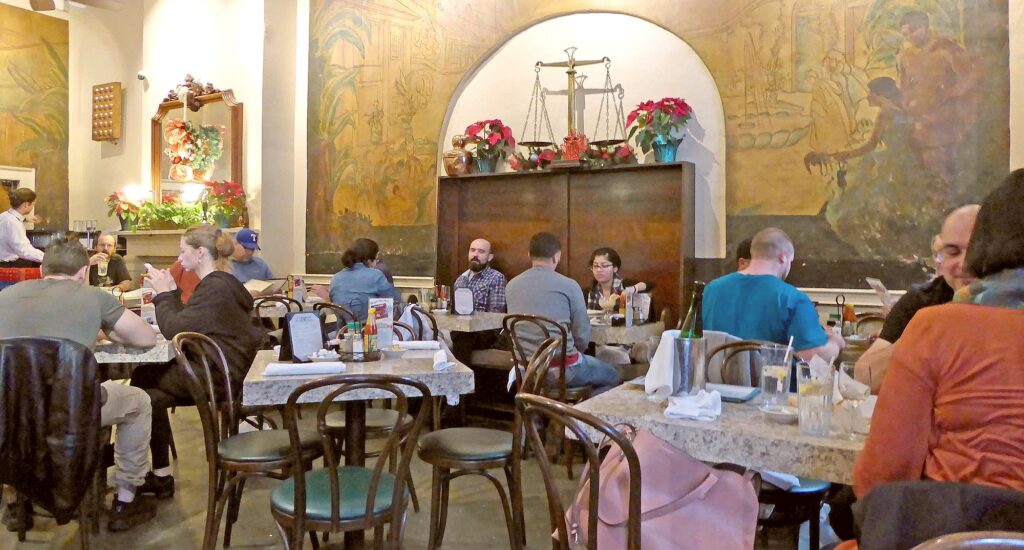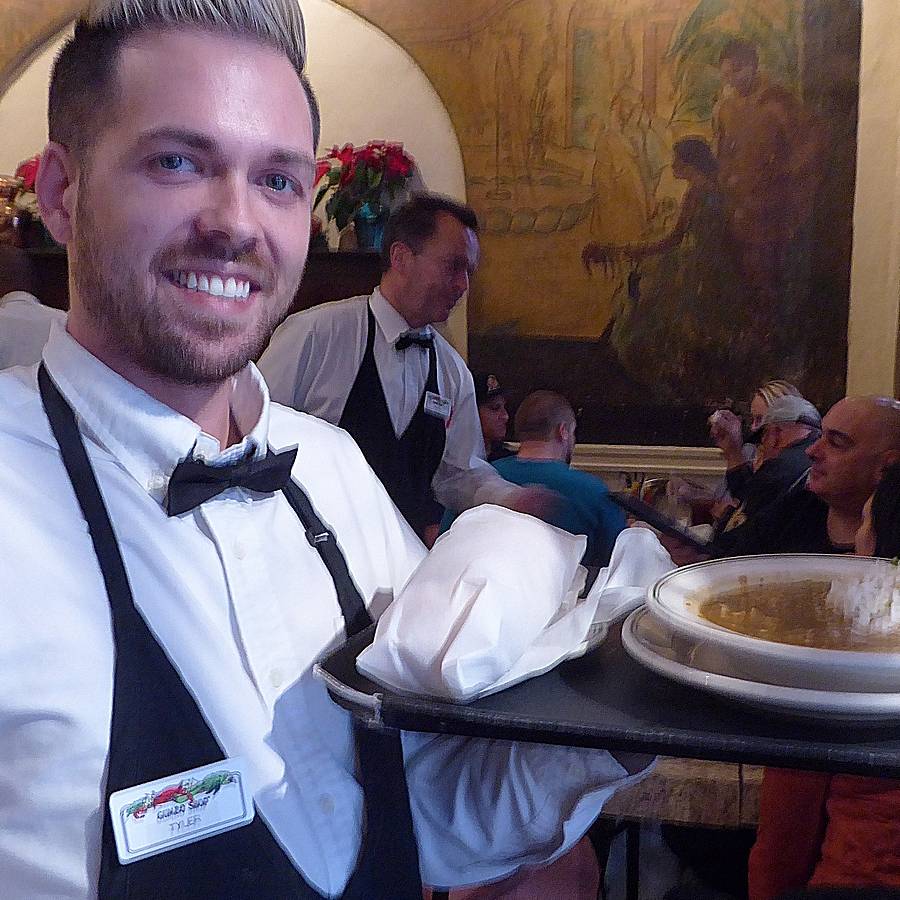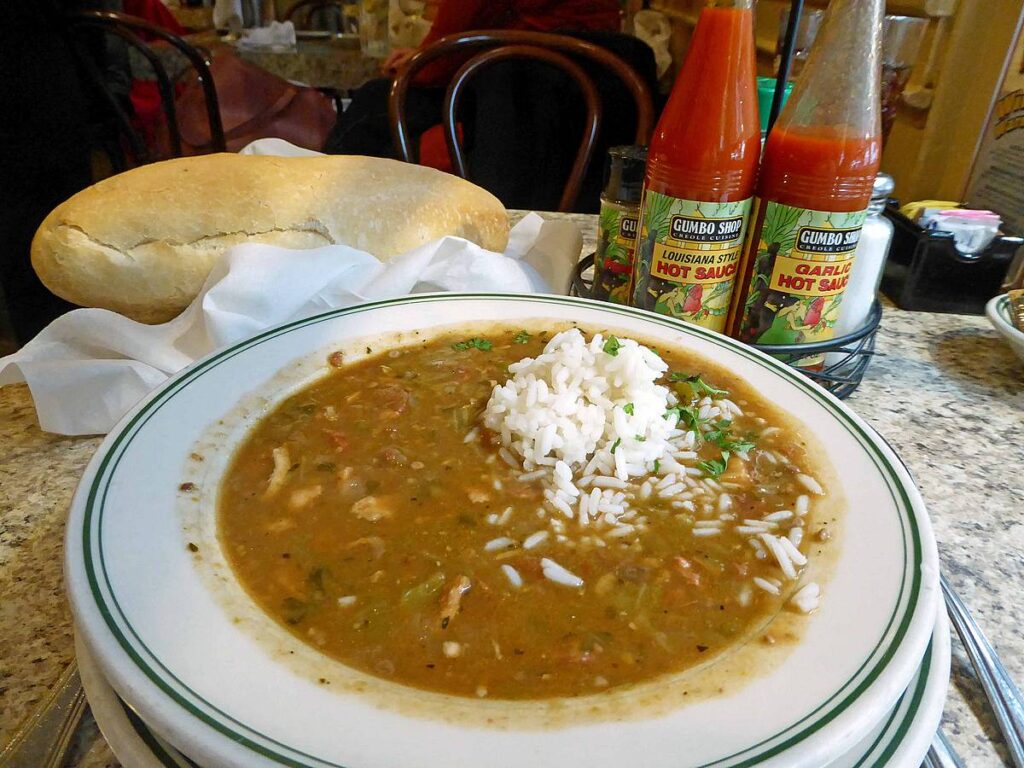
Some 80 communities in Louisiana celebrate Mardi Gras but New Orleans has claimed the holiday of unbridled excess as its own. The locals have made the French Catholic cycle of temptation and atonement into something of an art form. If you’re not sorry the next morning, cher, then you didn’t have fun the night before. Not for nothing does St. Louis Cathedral (below) dominate the skyline of the French Quarter.

Mardi Gras in New Orleans is founded on the idea that you need to pack enough warm memories into the week before Ash Wednesday to last the entire 40 days of Lent.

If, like us, you can’t be in town for the parades and general shenanigans, be sure to visit Mardi Gras World (1380 Port of New Orleans Place, New Orleans, LA; 504-361-7821; mardigrasworld.com) next time you do make it to New Orleans. The warehouse-like museum holds costumes and floats from generations upon generations of Mardi Gras krewes. It’s a feast for the eyes.
While we can’t join the fun in the streets this year, we’re celebrating the quintessential flavor of New Orleans at home with big bowls of gumbo — the multicultural culinary queen of Creole and Cajun cuisine.
The founding French brought their culinary techniques to the city. The Spanish who succeeded them brought the trinity of New Orleans cookery: bell peppers, celery, and onion. Their enslaved African cooks added okra to the pot for flavor and thickening and somewhere along the way, the Choctaws’ ground sassafras root (called filé by the French) came to be a hallmark of gumbo. No wonder the dish has come to symbolize the cultural melting pot.
For the city’s most reliable gumbo, head to the Gumbo Shop
Some people argue that a proper gumbo is made only with oysters, crawfish, shrimp, crab, and assorted fin fish. That makes it ‶meatless,″ a technicality that helps brighten the Lenten dinner table. We prefer ours with chicken and spicy andouille sausage — both of which are less pricey than the seafood and are arguably more penitential. (Let’s face it. Having to eat gumbo is hardly penance.)

We’ve tried many versions in New Orleans and, honestly, none of them disappointed us. But our favorite version comes from the Gumbo Shop (630 St. Peter Street, 504-525-1486, www.gumboshop.com), a perennial Best Gumbo winner in the Best of New Orleans readers’ poll conducted by the Gambit, the city’s arts and entertainment paper.
The Gumbo Shop restaurant (at the top of this post) was established in 1948 and features the traditional New Orleans style of ceiling fans, a large bar, big windows on the street, and decorative murals. It’s always hopping, yet the waiters and waitresses are models of calm, even chatty efficiency. When the gumbo comes out, it’s usually accompanied by a hot loaf of crusty French bread. And if you find the spicing too mild, there’s always a selection of proprietary hot sauces on the table.
CHICKEN AND ANDOUILLE GUMBO
Our version is adapted from the Gumbo Shop. They use whole chickens in their gumbo, but we like to stick with chicken thighs for an intense chicken flavor. Alas, this time of year we’re reduced to using canned tomatoes, but that’s not a hardship if you can find San Marzano DOP tomatoes in puree. Have some patience when you brown the roux. Keep stirring until it’s the color of old leather. Just don’t burn it!

INGREDIENTS
- 4 pounds chicken thighs
- 2 quarts water
- 1 bay leaf
- 2 tablespoons olive oil plus 1/2 cup olive oil
- 1 pound fresh or frozen okra in 1/2 inch pieces
- 1/2 cup flour
- 2 cups chopped onion
- 1 cup chopped green pepper
- 1 cup chopped celery
- 2 28-oz cans San Marzano DOP tomatoes, chopped
- 12 ounces andouille sausage, sliced in 3/4” rounds
- 1 teaspoon dried thyme
- 1 teaspoon sage
- 1 teaspoon black pepper
- 2 teaspoons sea salt
DIRECTIONS
Simmer chicken thighs in water with bay leaf for 45 minutes. Remove chicken and set aside to cool. Remove bay leaf and reserve cooking water as chicken stock. When thighs cool, strip meat from the bones and reserve.
In a large skillet, heat 2 tablespoons olive oil and cook the okra for 10-12 minutes, stirring frequently to keep from burning. Cook until the stringy strands disappear and okra is lightly browned. Set aside.
In a large Dutch oven with a heavy bottom, heat 1/2 cup olive oil over medium high heat. Add the flour and stir and cook until flour browns into a roux. When color reaches dark brown, stir in onion, green pepper, and celery. Cook, stirring occasionally and scraping up brown bits from bottom of Dutch oven.
When vegetables are tender, add tomatoes, sausage, and sauteed okra and cook for 15 minutes. Add the spices and mix well. Pour in 8 cups reserved chicken stock, bring to slow boil, and simmer for an hour. Add cooked chicken and additional stock if necessary. Adjust seasoning and serve in large bowls with steamed white rice.
